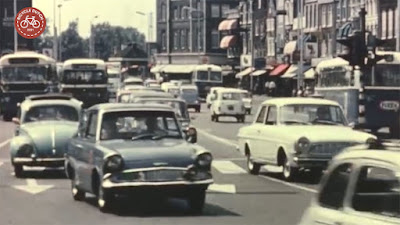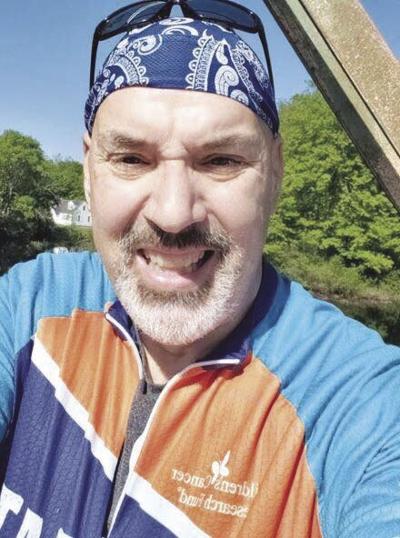I wish I had spent more time....
So begins a familiar deathbed lament. When the end is imminent, people say they wish they'd spent more time with their kids or grandkids or doing almost anything besides whatever they did for a living or anything else they had to do.
What got me to thinking about that? Well, if you spend enough time listening to National Public Radio, you could come away thinking that during the lockdowns and other COVID-19 related restrictions, everyone in the world learned a new foreign language or how to bake sourdough bread. Or they figured out how to do, on Xoom or some other online platform, the things they did before or with flesh-and-blood humans. If they didn't engage with such pursuits, they were writing novels, making furniture or taking advantage of all of those business opportunities the pandemic presents--assuming, of course, you have the cash to invest.
You have to wonder whether, when things revert to "normal," whatever that mean, some people will say, "Gee, I wish I'd spent more time (fill in the blank) during lockdown."
Well, OK, you don't have to wonder. (Who am I to tell you that, right?) But I do because, well, my mind wanders into all sorts of dark and arcane places and leads me to all manner of useless knowledge and speculation. I have, however, started to ask whether I did one particular thing that might have added to the treasure trove of knowledge and wisdom--well, all right, wit and whimsy--found in this blog.
So what could I have spent more time doing--during the pandemic, and before? Reading old Campagnolo catalogues? Hmm...Maybe. Just when I think I know as much about Campy as Sheldon Brown knew about, well, everything (or so it seemed) related to bicycles, I find out something that changes my view of...what I know and don't know. (Is that solipsistically esoteric, or what?)
I console myself with the thought that until I learned--within the past few days--what I'm about to relate, I held the same mistaken belief 99 percent of Campagnolo (or retro-bike) aficionados held. I can further assuage my guilt feelings by telling myself that while this is fairly significant in the world of cycling, in the scheme of things, it pales in comparison to, say, the fact that until the middle of the sixteenth century or so, almost everybody thought our little orb is flat.
Believe it or not, some folks--who have access to the same technology you're using to read this--still cling to such a notion. Then again, millions of people in the richest and most technologically advanced nation the world have ever seen continue to deny the result of said nation's most recent presidential election. Ergo, according to their logic, Joseph R. Biden is not the Leader of the Free World, just as their country claimed, from 1949 until 1979, that a nation containing one of every four people living on this planet didn't exist.
(Imagine what would have happened if the US hadn't, finally, recognized the People's Republic of China. Mango Mussolini would've been blaming Mexicans for everything!)
But I digress. The revelation that shook my foundation--of Campagnolo knowledge, anyway--is the revelation that the Gran Turismo rear derailleur isn't what I--and, probably, you--thought it was.
No, I didn't learn that it actually shifted better on 14-34 freewheels than the SunTour Cyclone GT or Huret Duopar and that mine didn't because I didn't use butter from the milk of buffaloes grazed and milked in the shadow of the Croce d’Aune to lubricate the pulleys. I didn't learn that because, well, I never actually owned or rode a Gran Turismo. I adjusted and replaced a few GTs when I worked in shops, and even their owners admitted the GT wasn't great.
What I learned is that the mechanism that looks like a baroque scimitar, and was introduced in 1971, is not the only Campagnolo derailleur with “Turismo” in its name. Nearly a decade earlier, Campy brought out a derailleur called simply the "Turismo."
It bore almost no resemblance to the later contraption bearing the same name. For one thing, it didn't have those wild red "C" bolts. (For a long time, they were the reason why I wanted to a GT, if only to collect.) For another, and more important, thing the earlier Turismo doesn't look like it was designed with touring in mind--unless you are a credit-card tourer who sprints across flatlands (flat earth?). If anything, the Turismo appears to be a less-expensive version of the original Gran Sport, which became the Record/Nuovo Record.
I've spent some time looking up old Campagnolo catalogues. The only listing I could find for the Turismo is in the 1962 edition. Then again, Campagnolo sometimes--especially in those days--manufactured items that were never listed, or continued to make or offer parts without listing them. So it may well be that the Turismo wasn't a one (year)-and-done affair.
 |
1962 Campagnolo Turismo. I don't know whether they were typical, but the pulleys on this one seemed to be a "transition" or "compromise" between earlier smooth pulleys and later toothed ones.
|
 |
| Campagnolo Gran Turismo, circa 1972 |
I couldn't find much other information about the derailleur. But from my knowledge of other Campy stuff, I believe that the Turismo might have been a "transitional" derailleur. Their original Gran Sport rear derailleur*--the first with their familiar dropped-parallelogram design--appeared in 1951 and continued until the introduction of the Record (a refinement of the GS) in 1963. The Record had the same parallelogram as the GS but its pulley cage was offset from the bottom pivot to allow for a more nuanced chain gap between the derailleur and freewheel and, thus, somewhat larger gear capacity. The Turismo, on the other hand, had a slightly longer cage than either the GS or Record and its lower pivot was set to allow more rotation--which, in theory, should have allowed for the self-adjustment in chain gap and greater gear capacity (26T vs 24T) offered by the Record.
Tullio Campagnolo may well have intended the 1962 Turismo as a touring derailleur. If that is the case, it reflects his, and the company's misunderstanding of, or disdain for (depending on what you believe) bicycle touring. It's equally plausible that he was trying to make a "budget" version of the GS: The pressed-steel cages and cadmium plating on most parts would indicate as much. Or, as I posited earlier, the Turismo was to be a "transition" model from the GS to the Record.
Whatever Tullio's reasons for creating it, or how long his company produced it, the Turismo is an interesting curiosity. Do I wish I've spent more time perusing old Campagnolo catalogues during lockdown? Well, maybe...
*—The original Campagnolo Gran Sport, made from 1951 to 1963, is similar in design but different in materials and finish from the derailleur with the same name that was produced from 1975 to 1985. The original GS was Campy’s “professional “ offering, while the later one was the company’s second-line (to the Record/Nuovo Record) offering.














